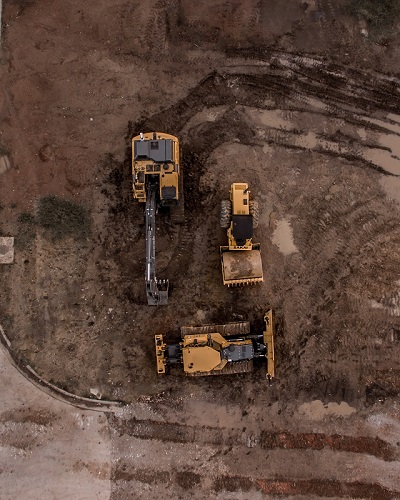 The most common objects stolen from jobsites are tools, small supplies, heavy equipment, metal and lumber. That is why it is important to keep track of all your equipment so that you know it is missing and when it becomes missing.
The most common objects stolen from jobsites are tools, small supplies, heavy equipment, metal and lumber. That is why it is important to keep track of all your equipment so that you know it is missing and when it becomes missing.Up to $1 billion in equipment, materials and appliances are stolen from construction sites every single year, and less than 25% is recovered, according to the National Equipment Register. Today there is a wide variety of equipment used on a construction site, ranging from large cranes to mini excavators. There are also hundreds of hand-held and power tools in use daily. Trucks and other fleet equipment are used around the jobsite to deliver materials or remove waste.
 The most common objects stolen from jobsites are tools, small supplies, heavy equipment, metal and lumber. That is why it is important to keep track of all your equipment so that you know it is missing and when it becomes missing.
The most common objects stolen from jobsites are tools, small supplies, heavy equipment, metal and lumber. That is why it is important to keep track of all your equipment so that you know it is missing and when it becomes missing.
Theft can happen when construction sites are not monitored with cameras or when overall security is lax. Theft can also happen when a worker walks off with a small item or tool – not even realizing until they got home that they walked off with the item.
Because construction materials are in such high demand due to COVID, prices have skyrocketed, making these materials even more suspect to theft. If materials or equipment are stolen from a jobsite, delays to the project can happen.
DETERRING THEFT
Jobsites need to install cameras around the entire area to capture video of thefts or suspicious persons. Jobsite security cameras deter burglars from committing a crime in the first place, but they also catch them in the act, which means you may be able to recover the stolen equipment. High-quality cameras that power themselves with solar cells, are weatherproof and can record at night are the best investment. Plus, deploying these cameras with the aid of a professional security team ensures cameras are positioned in the best possible location to maximize coverage.
Fleet equipment and trucks can be outfitted with telematics or GPS equipment that can be easily tracked. IoT sensors can be installed on tools and other equipment, then tracked and traced with readers that record the movement of these items around the jobsite.
One company that used telematics equipment arrived at its jobsite to find its skid steer had been stolen. Managers were able to ping the equipment and get the coordinates and an address where the machine had been moved. The foreman and superintendent arrived at the location and the sheriff released the equipment back to the company. Telematics equipment saved the company from purchasing a new skid steer.
On-site security personnel help to deter crimes as well. Also, hanging signage that warns about prosecution of thieves can thwart criminal acts.
USING AUTOMATION AND TECHNOLOGY TO CREATE A SAFER JOBSITE
Many contractors use paper logs to track tools. The type of equipment, quantity, person who checked it out expected return date are all written down manually. When the worker finishes with the equipment, he/she checks it back into management. But papers can get lost. Plus, if you enter information into a paper log, your admin person must re-enter the information into a computer system for billing purposes. Reentry of data often leads to mistakes and errors.
Safety management software automates the safety management process at a jobsite. By collecting and analyzing safety records you have better control over things that could cause a near-miss or incident. Records of equipment can be collected to meet regulations and prove compliance.
Solutions exist that automate the tracking of tools and equipment, so you know where it is located at all times. You get a 360-degree view of equipment in the office, field and shop. You can assign equipment and tools out and check them back in digitally, as paper processes and forms are eliminated. These solutions create and assign detailed work orders to track equipment history, costs and performance so that all equipment and tools work top notch.
BEST PRACTICES FOR A CRIME-FREE JOBSITE
It is sad to say, but not everyone can be trusted. This includes members of your team and subcontractors. To help prevent theft, keep the jobsite clean as it is harder to steal things when the area is neat and organized. Walk around the jobsite to notify team members that you are aware of everything going on.
Other best practices include:
Remember: The less equipment that is stolen means the less costs you have to add to your project.
Tom Webb is vice president of strategy/R&D, HCSS, a member of multiple AGC chapters. For more information, visit www.hcss.com.
The Associated General Contractors of America
http://www.acg.org/